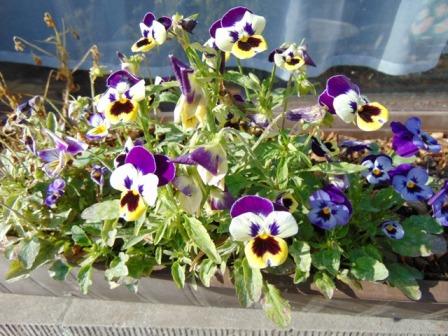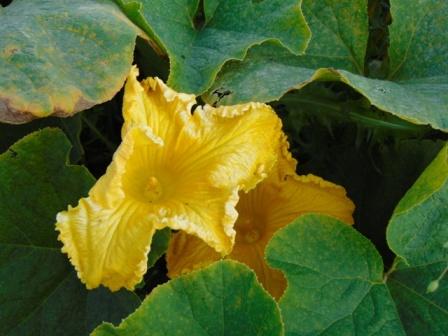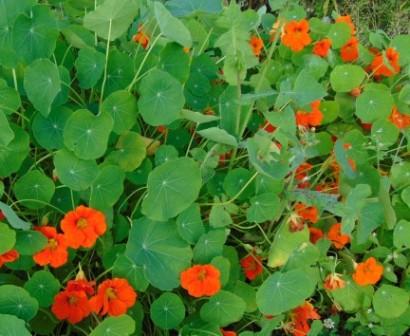
Not only leaf, root and seeds of some plants are edible, also the flower. Usually only the edible petals, the flower base sometimes, not the stem (which is often bitter).
Buy or just pick flowers that are grown without pesticides. Don’t pick out along busy roads or industrial zones. Also monoculture fields (and the edges) are usually sprayed. Wash picked in the wild flowers before you eat them.
You can use them fresh or dried.
The most common edible flowers, which also offer some volume, of course are cauliflower, broccoli and artichoke.
Real flowers are used more as decoration or herb.
 Watercress and nasturtiums, zucchini, pumpkin, Egyptian onion, rosemary, chives, thyme, oregano, basil, sage, mint, borage, borage, jasmine, chamomile, valerian, mallow. Green Coriander seeds.
Watercress and nasturtiums, zucchini, pumpkin, Egyptian onion, rosemary, chives, thyme, oregano, basil, sage, mint, borage, borage, jasmine, chamomile, valerian, mallow. Green Coriander seeds.
Flowers of bolted Brussels sprouts, turnips, radish, radish, mustard, arugula, chicory and endive.
Peas (Pisum sativum) and Sweet pea (Lathyrus odoratus).
Daisy, primrose, red clover, yellow ray flowers of sunflower (and the ripe seeds), lemon geranium, white and purple dead nettle, wild garlic, dandelion, sweet william, meadowsweet.
Marigold (calendula). Lavender. Cornflower.
 Elderflower, apple blossom, quince blossom, hop, hawthorn, broom.
Elderflower, apple blossom, quince blossom, hop, hawthorn, broom.
(Tri-color) violet, peony, phlox, roses, hollyhock, snapdragon, primrose, sweet woodruff.
Dahlia, Dianthus (carnation), tulip, primrose (Primula vulgaris), hostas, Sweet Violet, Impatiens, daylily, geranium, chrysanthemum, marigold (Tagetes).
Coltsfoot, periwinkle (single flower).
For tea, there are to use, many more species including blackthorn flower, elderflower...
The medicinal use of flowers is even more extensive, but obviously requires thorough knowledge of plants and dose to use.
